Ilankai Tamil Sangam28th Year on the Web Association of Tamils of Sri Lanka in the USA |
|||
 Home Home Archives Archives |
Prabhakaran’s Tigers and Mandela’s SpearsPart 8by Sachi Sri Kantha, April 8, 2012
International Recognition by the Establishment Towards the end of Part 7, I mentioned about the 1993 Nobel Peace Prize award by the Establishment for Nelson Mandela. But, it will be an insult to Uncle Sam’s bureaucratic morals, if I omit how the Washington officials belatedly upgraded Mandela’s civil status rank in 2008. They took off his name from the ‘terrorism watch list’, a full 15 years after he was awarded the Nobel Peace Prize in 1993! That indeed was an upgrade in official recognition from Uncle Sam’s Establishment bestowed on Mandela, when he reached 90 years! It may be of relevance to reproduce what I wrote on this episode in July 2008, when the news was released about Mandela being dropped from Uncle Sam’s terrorism watch list. My thoughts that appeared with the title, ‘Sloths, Snails and the Primates of the US State Department’ were:
I noted two points which were glaringly missing. First, a non-acknowledgement that the originally biased decision that made Mandela a terrorist was largely based on ethnic type-casting. In the 1960s, institutionalized racism in the Washington corridors of power was a given. Simply put, while Mandela and his agitators were black, the rulers of South Africa were whites, and the capitalist interests of Uncle Sam dictated that ruling whites were the preferred partners, as opposed to ANC and Mandela. It need not be stressed that the 1997 decision of the U.S. State Department to tag the LTTE as a foreign terrorist organization was also based on the ANC-Mandela example of ethnic type-casting. Secondly, a diligent omission that the CIA operatives had goofed (as is their habitual wont!) in distinguishing a liberation movement leader from that of a terrorist.” The more I think about this episode, the more I wish to dig in. In an earlier newsitem, Mimi Hall reported that, “In the 1970s and '80s, the ANC was officially designated a terrorist group by the country's [i.e., South Africa] ruling white minority. Other countries, including the United States, followed suit.” [US has Mandela on terrorist list, USA Today, April 30, 2008] If one backtracks the AFP news report that Mandela’s name was in the list for three decades ( i.e., ~1978, when he was in prison). Guess, who was the American president then? Jimmy Carter! This moralist guy made human rights an issue of his prime concern. Even he appears as a phony in my eyes now. Jimmy Carter was also awarded the 2002 Nobel Peace Prize. I checked President Carter’s Nobel Peace award lecture, and while he mentions the names of 16 other previous Nobel Peace prize laureates, he had omitted (by design or accident) Mandela’s name! As one would expect, Jimmy Carter’s name is missing in Mandela’s 1994 autobiography too. After Jimmy Carter, we had Ronald Reagan, George H.W. Bush, and Bill Clinton as presidents. These guys also never bothered to elevate Mandela’s lowly status from Uncle Sam’s bureaucratic edict, or should I say, they were not color blind. The ultimate recognition from Uncle Sam’s Establishment came to Mandela only in 2010, when the current President Barrack Obama (43 years junior to Mandela and the first bi-racial President) contributed a forward to Mandela’s book ‘Conversations with Myself’.
There is more to the truth, relating to the final sentence of Time magazine’s annotation on Prabhakaran; i.e., “A Tiger suicide bomber killed Rajiv Gandhi, former Indian Premier in 1991.” What I wish to stress here is that, it was only an out-of-context half-truth. Like all politicians, Rajiv Gandhi made wrong decisions at wrong times, and as a result he paid with his life. What was the overlooked fact needs mention. By consensus, nearly 6,000 Tamil civilians in Sri Lanka lost their lives due to Rajiv Gandhi’s naivete. If President Obama can claim on May 1, 2011 that justice was served to Osama bin Laden extra-judiciously for the loss of 3,000 odd American lives on Sept,11, 2001, what inhibits a cynic like me to ask what is wrong in claiming that justice was served extra-judiciously to Rajiv Gandhi for his role in the death of 6,000 Tamil civilians?
Before his death in 1991, Rajiv Gandhi had life-threats within India (from Sikhs) and in Sri Lanka (from Sinhalese). Around 15 million Sinhalese hated Rajiv Gandhi until 1991, while he was alive for his upstart behavior in landing the Indian army in the island. Rajiv Gandhi became a darling to the Sinhalese establishment only after his death. While most terrorism scholars and journalists parrot-mouth the fact that Rajiv Gandhi was killed by a LTTE suicide bomber, they conveniently ignore the facts of what Rajiv Gandhi did boomerang to cost his life. So as, history should not be ignored, I provide excerpts from two paragraphs from Rohan Gunaratna’s book, Indian Intervention in Sri Lanka (1993), about what happened on July 30, 1987.
Terrorism and Bombing As Time magazine’s 1999 recognition of Prabhakaran did mention about suicide bombing, it is my onus to focus on providing some factual details relating to LTTE and suicide bombing. Complete dependence by Rene Bakker and colleagues (2012) on (1) incomplete databases (such as Global terrorism database maintained by the National Consortium for the Study of Terrorism and Responses to Terrorism, University of Maryland), (2) scholars endowed with bias (the likes of Rohan Gunaratna), and (3) error-prone books and papers of language-challenged academics (the likes of Vanda Felbab-Brown, Audrey Kurth Cronin, Cecile Valerie van de Voorde and Bruce Hoffman) who had a penchant to climb in the terrorism bandwagon, had distorted the worth of their comparative study between MK and LTTE. They fail to recognize that the dark networks (MK and LTTE) they had chosen to study were led by non-whites, and the inherent ethnic bias by the white ethnic academics and analysts.
All terrorism scholars have focused exclusively on LTTE, employing suicide bombers. Now, let me go the fundamentals first. What is bombing? Before one does the number crunching on suicide bombing attacks by LTTE (when, where, who and how), has anyone bothered to look at ‘simple’ bombing incidents in Sri Lanka? I use the adjective ‘simple’ in simple bombing only to differentiate it from suicide bombing. It should not be taken that ‘simple’ bombing causes less damage than suicide bombing. Simple bombing also include shelling with different varieties (shrapnel shell, cluster shell, artillery shell, high explosive plastic shell etc.) In terms of loss of lives and damage to property, simple bombings cause more extensive damage than suicide bombings. Who held the lead in aerial bombing and shelling in the Sri Lankan civil war? In my view, it was not LTTE, but the Sri Lankan military. (Somasundaram, 1996) And why LTTE developed suicide bombing as a low-cost offensive weapon? The first documented Sri Lankan air force attack on LTTE occurred in April 22, 1987. I provide a description of this bombing by Barbara Crossette to the New York Times. I reproduce some segments from this report.
There is no doubt that, it was this type of aerial bombing by the Sri Lankan military which precipitated Prabhakaran’s decision to consider suicide bombing as an offensive weapon. The first suicide bombing episode by LTTE occurred on July 5, 1987. The venerated FBI’s definition of terrorism states “unlawful use of force or violence against persons or property to intimidate or coerce a government, the civilian population, or any segment thereof, in furtherance of political or social objectives” [Meloy and McEllistrem, 1998]. Most of the terrorism scholars convenient interpretation of terrorism stops with the word ‘government’ and ignore the rest which include “the civilian population or any segment thereof, in furtherance of political or social objectives.” If the entirety of FBI’s definition of terrorism is taken into account, the Sri Lankan government, Sri Lankan military and the Indian military which confronted LTTE deserves condemnation as terrorists. Wikiality Doping Syndrome (WDS) It is my contention that the university academics in America (the likes of Robert Pape, Mia Bloom, Audrey Kurth Cronin and Vanda Felbab-Brown) who climbed the terrorism bandwagon in the first decade of the 21st century for prestige and funding suffer from what I introduce as Wikiality Doping Syndrome (WDS). I should define this syndrome. Doping is well known in the sporting world. But, it is a perfect scientific technique used in semiconductor research. Jack Kilby (the 2000 Nobel Physics laureate and the inventor of the integrated circuit) defined it as a ‘careful addition of impurities to predetermined areas’ to change the electrical characteristics of semiconductors. In sports like weight lifting, cycling, baseball and even in athletics, this process was picked up by sportsmen and sportswomen to build their muscle strength and gain vital edge over their competitors. The doping phenomena had spread into academics as well. Thus, we have phrases like ‘academic doping’ which implies off-label use of specific drugs to gain unlawful advantage over competitors. Then, the word ‘Wikiality’, which according to humorist Stephen Colbert is ‘an online world made up of collections of untruths that are widely accepted’. Combine ‘Wikiality’ and doping and we have Wikiality Doping Syndrome, which had spread in academia for the past decade and is being infected to the graduate students and undergrads who prepare their theses and term papers based on the influences of their mentors. Some notable traits which characterize this syndrome are, (1) Never bother to invest time and energy to learn the language and culture of one’s study sample. (2) Never bother to invest time and energy to visit the location for field work. (3) If possible, assemble gossip from secondary or tertiary sources available from the on-line garbage sites for writing research reports and books. (4) If funds are forthcoming, get assistance for translation of original material from young Tamils who live in diaspora, or displaced Tamil journalists, by paying coolie wages. (5) Pretend as a terrorism scholar, by publishing at least one book, with an eye-catching title, which has key-phrase suicide bombing. After the 1994 election of Mandela as the President of South Africa in a free vote and the incorporation of MK members into the South African military, the damage by Wikiality Doping Syndrome was minimal to MK. The Wikipedia (web-based online, open encyclopedia) was formally launched only in January 15, 2001. In contrast to MK, as LTTE remained as a ‘labeled terrorist’ group, it suffered seriously in the hands of academics who suffer from Wikiality Doping Syndrome. Paranoid Uncle Sam’s Prime dilemmas
MK and LTTE did share one feature together in that (unlike Al Queda), they never waged war against Uncle Sam. But, they were affected by the two prime dilemmas of Uncle Sam’s paranoia, namely communism and terrorism. Rene Bakker et al.(2012) had conveniently ignored this similarity in their study. From 1946 to 1991, communism was the prime dilemma for Uncle Sam. Then, with the break-up of Soviet Union, terrorism became the prime dilemma of Uncle Sam. The edicts passed, restrictions implemented and people’s freedom scuttled can be traced to this paranoia. It is convenient to sketch how opposing communism morphed elegantly into opposing terrorism. In the pulp literature authored by language-challenged foreign journalists and analysts during 1980s and 1990s, LTTE was sloppily painted as ‘Marxist-Communist’ guerrilla group. This was not so. Apart from the other reasons that I have postulated in earlier parts for LTTE’s failure (such as, Blacks were the majority in South Africa, and South Africa was blessed with material wealth), MK was lucky in that Mandela was able to come out of prison, with the fall of communism. LTTE was unlucky in that Uncle Sam’s criteria on terrorism based on ethnic profiling couldn’t distinguish freedom fighters from non-freedom fighters. On this issue of ethnic profiling and how it came to be applied to Tamils, I had written a commentary on Sept.9, 2008 in this website (see, ‘On revisiting Tarzan Lives: A 1978 study of Susan J. Hall and its relevance for Tamils’ /2008/09/Tarzan_Lives.php?uid=3082). Cited Sources Bakker R.M., Raab, J. and Milward, H.B: A preliminary theory of dark network resilience. Journal of Policy Analysis and Management, 2012; 31: 33-62. Boffey, P.M: Herbicides in Vietnam: AAAS study runs into a military roadblock. Science, 1970 Oct 2; 170: 42-45. Crossette, B: Sri Lanka air force raids Tamil guerrilla bases. New York Times, Apr.23, 1987. Section A, page 14. Gunaratna, R: Indian Intervention in Sri Lanka, South Asian Network on Conflict Research, Colombo, 1993, p. 193. Kilby, J: Turning potential into realities: the invention of the integrated circuit. Nobel physics prize lecture delivered on Dec.8, 2000. [http://www.nobelprize.org/nobel_prizes/physics/laureates/2000/kilby-lecture.html] Meloy J.R. and McEllistrem, J.E: Bombing and psychopathy: an integrative review. Journal of Forensic Science, 1998; 43(3): 556-562. Michener, J: Selected Writings of James A.Michener, Modern Library, New York, 1957, p. ix. Somasundaram, D.J.: Post-traumatic responses to aerial bombing. Social Science & Medicine, 1996; 42(11): 1465-1471. *****
| ||
 Relating to the removal of Mandela’s name from the terrorism watch list, Mr. Tom Casey, the U.S. State Department spokesman, asserted “What it will do is make sure that there aren’t any extra hoops for either a distinguished individual, like former President Mandela, or other members of the African National Congress to get a U.S. visa.” [ CNN.com news, July 2, 2008].
Relating to the removal of Mandela’s name from the terrorism watch list, Mr. Tom Casey, the U.S. State Department spokesman, asserted “What it will do is make sure that there aren’t any extra hoops for either a distinguished individual, like former President Mandela, or other members of the African National Congress to get a U.S. visa.” [ CNN.com news, July 2, 2008]. 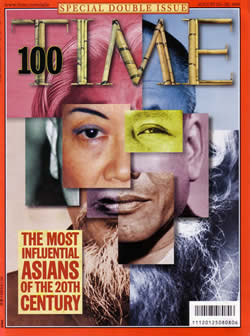 As I had indicated in
As I had indicated in 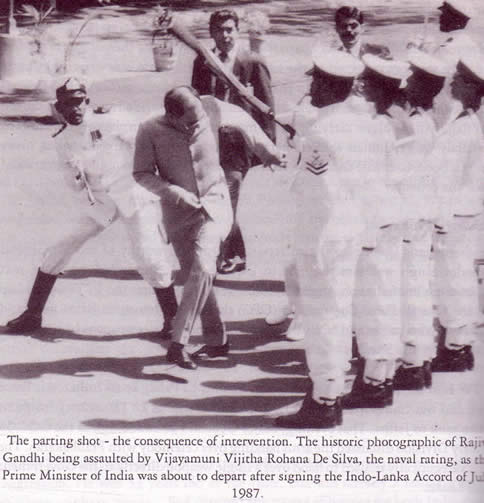
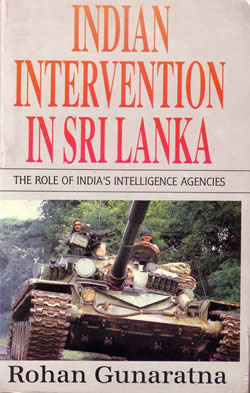 Though Gunaratna’s account appeared in 1993, there’s nothing on record (to the best of my knowledge) that the Indian authorities pursued seriously about this 1987 assassination episode that happened in Colombo, and facts relating to the other two Sinhalese colleagues (conspirators) who failed in their mission was hidden to the public. Though these two failed to take part in the action as they had plotted, between 1987 and 1991, they were left untouched by Sri Lankan or Indian authorities!
Though Gunaratna’s account appeared in 1993, there’s nothing on record (to the best of my knowledge) that the Indian authorities pursued seriously about this 1987 assassination episode that happened in Colombo, and facts relating to the other two Sinhalese colleagues (conspirators) who failed in their mission was hidden to the public. Though these two failed to take part in the action as they had plotted, between 1987 and 1991, they were left untouched by Sri Lankan or Indian authorities!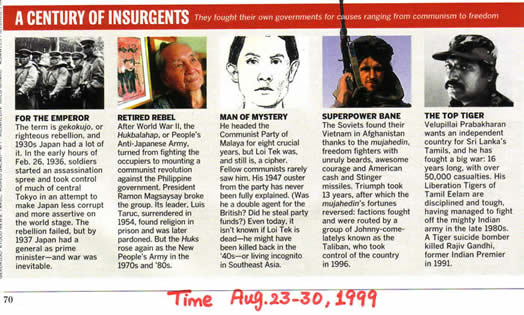 As an aside, I’m tempted to note that the militant dark network led by Jesus Christ and Apostles (2000 years ago), which later evolved into Christianity, was also led by non-whites. Their aggressors (Roman Empire) were led by whites. I acknowledge my debt to America’s foremost novelist-educator James Michener, for first imprinting this fact to me, in a forward to his collection of his writings. Michener wrote in 1956, “Jesus was an Asian with a dark, semi-Asiatic complexion. But in the main, before we Americans received Christianity it had been pretty well cleansed of Asian strains. Most Americans are quite convinced that Jesus was a white man, as proved by the paintings of Italy.”
As an aside, I’m tempted to note that the militant dark network led by Jesus Christ and Apostles (2000 years ago), which later evolved into Christianity, was also led by non-whites. Their aggressors (Roman Empire) were led by whites. I acknowledge my debt to America’s foremost novelist-educator James Michener, for first imprinting this fact to me, in a forward to his collection of his writings. Michener wrote in 1956, “Jesus was an Asian with a dark, semi-Asiatic complexion. But in the main, before we Americans received Christianity it had been pretty well cleansed of Asian strains. Most Americans are quite convinced that Jesus was a white man, as proved by the paintings of Italy.”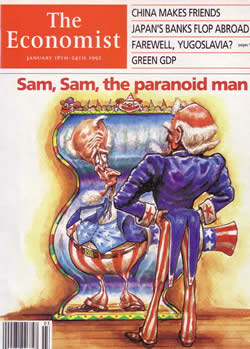 Comparing the success and failure of MK and LTTE, one should not ignore the two prime dilemmas of paranoid Uncle Sam. Twenty years ago, the Economist magazine caricatured the final lap of George H.W.Bush’s presidency, with a cover caption ‘Sam, Sam, the paranoid man’. A mirror in which the American president looks, portrays him as a balding man with twisted jaws, slender neck, tubby belly and skeletal legs. It may not be wrong if I assert that American foreign policy decisions were partially dependent on this sort of paranoia. The best examples can be ticked as, (1) having Mandela in its terrorist list for three decades until 1998, (2) including LTTE in the list of Foreign Terrorist Organizations in 1997, while omitting Al Queda from the same list.
Comparing the success and failure of MK and LTTE, one should not ignore the two prime dilemmas of paranoid Uncle Sam. Twenty years ago, the Economist magazine caricatured the final lap of George H.W.Bush’s presidency, with a cover caption ‘Sam, Sam, the paranoid man’. A mirror in which the American president looks, portrays him as a balding man with twisted jaws, slender neck, tubby belly and skeletal legs. It may not be wrong if I assert that American foreign policy decisions were partially dependent on this sort of paranoia. The best examples can be ticked as, (1) having Mandela in its terrorist list for three decades until 1998, (2) including LTTE in the list of Foreign Terrorist Organizations in 1997, while omitting Al Queda from the same list.